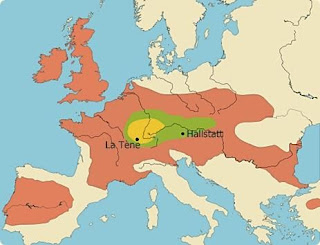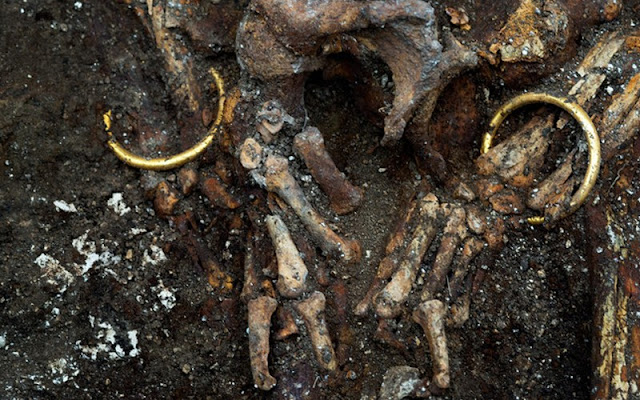 | In 2015 French archaeologists completed excavations of an ancient burial site revealing the decorated skeleton of a Celtic prince. The tomb was discovered in an industrial area of Lavau, a village near Troyes, about 150km southeast of Paris. The find was described as extraordinary by experts. Buried with a two-wheeled chariot, the body is believed to be a high ranking aristocrat from the Hallstatt culture that dominated central Europe during the Early Iron Age.

 |
Well-preserved Greek and Etruscan relics were found, including a bronze cauldron, decorated by Dionysus' head, at the centre of a 40m-diameter burial mound. Bronze dinner sets, delicately decorated ceramic platters, elaborate Greek vases and, finally, the deceased's remains, resting on his ornate chariot and still wearing his gold. He was dubbed the Lavau Prince. He was in his forties, in good health and tall. His only injury was a broken collarbone. His name will probably never be known because Celtic cultures left no written records.
 | The skeleton sported ancient pieces of jewellery including a richly decorated gold torque weighing more than half a kilogram and gold bracelets.
Remains of the deceased's clothing, such as shoe parts, finely worked amber beads that formed a necklace or hair decoration, and iron and coral hooks that attached to a piece of clothing were also retrieved. |  |

The Greek vase held a secret. It once contained red wine, produced in the city of Marseilles or in Italy and costly to import. |  |












No comments:
Post a Comment